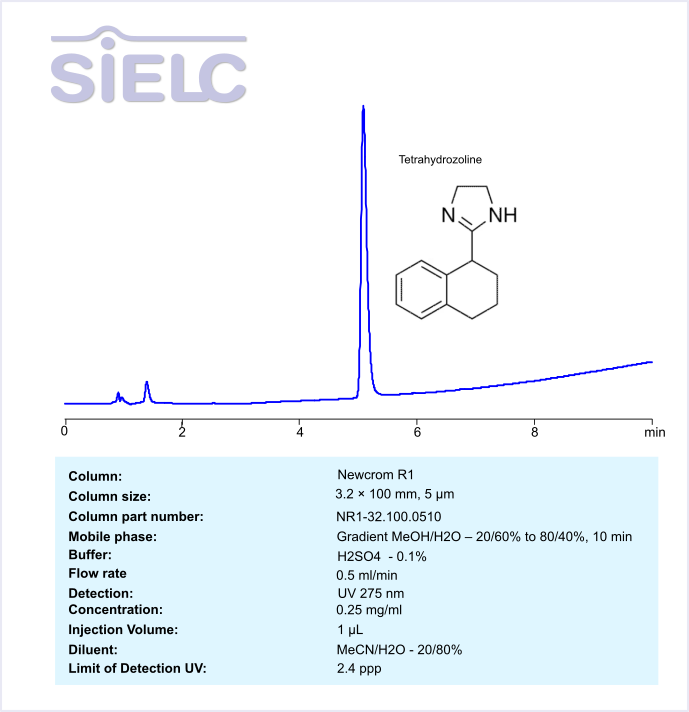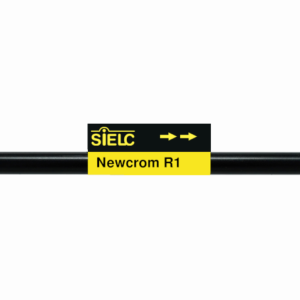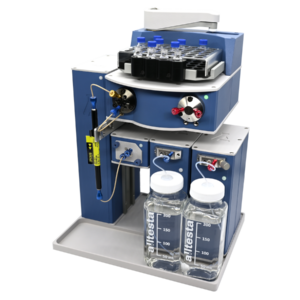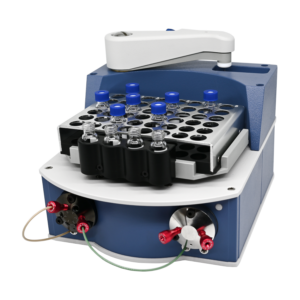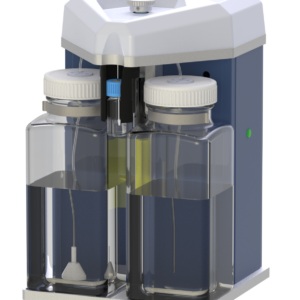HPLC Method for Tetrahydrozoline on Newcrom R1 by SIELC Technologies
High Performance Liquid Chromatography (HPLC) Method for Analysis of Tetrahydrozoline
Tetrahydrozoline is a medication primarily used as a topical decongestant. It is commonly found in over-the-counter eye drops (e.g., Visine) and nasal sprays to relieve redness in the eyes or nasal congestion.
Sample Preparation Procedure for HPLC Analysis of Tetrahydrozoline Hydrochloride in Eye Drops:
- Dilution:
- Transfer 1.0 mL of the eye drops into a clean vial.
- Add 1.0 mL of HPLC-grade methanol to the vial (1:1 dilution).
- Close the vial tightly and shake manually for about 1 minute to ensure the solution is well mixed.
- Filtration:
- Draw the mixed solution into a clean syringe.
- Attach a 0.45 µm syringe filter and filter the solution into a clean HPLC vial.
- Sample Handling:
- Use the prepared sample directly for injection into the HPLC system.
- If not using immediately, store the vial at 4–8°C, protected from light.
Tetrahydrozoline can be retained and analyzed using the Newcrom R1 stationary phase column. The analysis utilizes a gradient method with a simple mobile phase consisting of water, methanol (MeOH), and sulfuric acid. Detection is performed using UV at 275 nm.
| Column | Newcrom R1, 3.2 x 100 mm, 5 µm, 100 A, dual ended |
| Mobile Phase | Gradient MeOH – 20-60%, 10 min |
| Buffer | H2SO4 – 0.1% |
| Flow Rate | 0.5 ml/min |
| Detection | UV 275 nm |
| LOD | 2.4 ppb |
*LOD was determined for this combination of instrument, method, and analyte, and it can vary from one laboratory to another even when the same general type of analysis is being performed.
| Class of Compounds | Drug |
| Analyzing Compounds | Tetrahydrozoline |
Application Column
Newcrom R1
Column Diameter: 3.2 mm
Column Length: 100 mm
Particle Size: 5 µm
Pore Size: 100 A
Column options: dual ended

